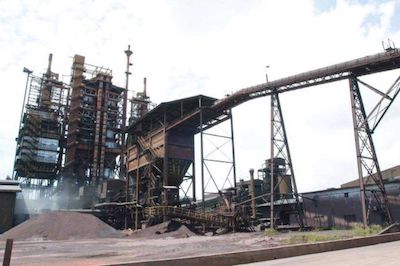
Lee Weng Khue, The Sun Daily
Ailing steel maker Perwaja Holdings Bhd may be down, but is it out?
Analysts contend that in the wake of a volatile steel market, the twice-revamped group will need a lot more than extension to its restructuring plan timeline to get back in the game.
When contacted, analysts said they do not see the significance of Perwaja in the local steel industry anymore and its attempt to stay afloat appears to be extremely challenging.
“What killed Perwaja were rising gas and iron ore prices. I don’t think there is any hope for them to revive the steel plant due to its cost structure. It’s likely to see Perwaja liquidated,” an analyst at a bank-based research house told SunBiz.
A planned RM1.8 billion injection to revive the group’s plant in Kemaman, Terengganu, by Chinese conglomerate Tianjin Zhiyuan Investment Group Co Ltd, lapsed early this month.
And now, the company has until March 30, 2017 to submit its regularisation plan. It is believed that Perwaja will make a final bet by seeking more time to come out with a new revival plan.
“We believe if there is a new plan, probably it could be another Chinese firm as they have the expertise and technology to run the steel operations more efficiently,” the analyst said.
In the meantime, Perwaja needs to negotiate a resolution of its debts directly with the lenders after the Corporate Debt Restructuring Committee removed the company from its purview.
Perwaja used to produce a wide range of products, including direct reduced iron, beam blanks, blooms and billets for the manufacturing, construction and infrastructure industries, with an annual production capacity of 1.5 million tonnes.
Another analyst opined that this is not entirely bad news for Perwaja given the cyclical nature of the sector, where the business conditions could change anytime despite the recent rise in steel prices, which have sent share prices of steel counters higher.
“If they (steel players) want to make money, actually the best time is now. We don’t know what will happen later on because this is a cyclical industry. If the Chinese steel prices drop, then it will create competition in the local steel market. By then, we have to lower our prices. If not, the consumers will import from China,” he explained.
He is cautious about the outlook for steel players given that the recent stellar results are mainly due to cheap raw materials in the last quarter of 2016.
“But as prices have risen, I believe the Q1 and Q2 results in 2017 won’t be as good as in Q4 2016,” he opined, noting that any decline in steel prices in China will put pressure on the local players.
However, he said there is no direct competition between local and Chinese steel as the latter is selling at a higher price. “If you import from China, you need to factor in the import cost as well, so nobody wants to import the steel from China. For now, local players are fighting among themselves only.”
He believes local steel counters could only see a further increase rise in share prices if China decides to cut its production capacity further.
Meanwhile, Inter-Pacific Research Sdn Bhd head of research Pong Teng Siew is of the view that the recent rise in steel prices is predominantly due to China’s stimulus, which saw a record US$540 billion in new loans being given out, suggesting a continued loose monetary policy to address its economic slowdown.
“This seems to be ongoing, which explains why the share market and commodity prices continue to climb, but it’s difficult to tell how long this will last. It will last as long as the China stimulus continues,” he said.
Nonetheless, Pong believes steel players would prefer stable prices.
“Not everyone benefit from higher steel prices, the volatile steel prices actually hurt them because they are unable to price the products well. Let’s say they receive orders when steel prices drop; even if prices rebound, they are bound by the quotation and are stuck with lower prices,” he explained.



No comments:
Post a Comment
Note: Only a member of this blog may post a comment.